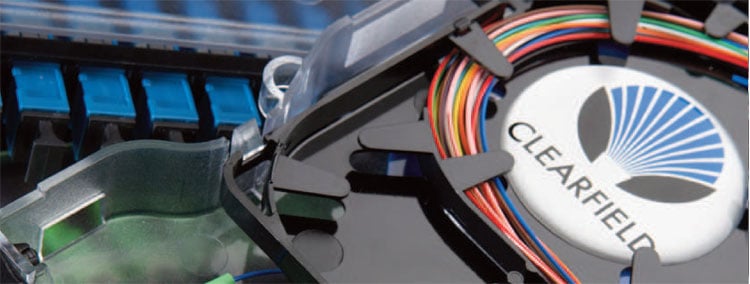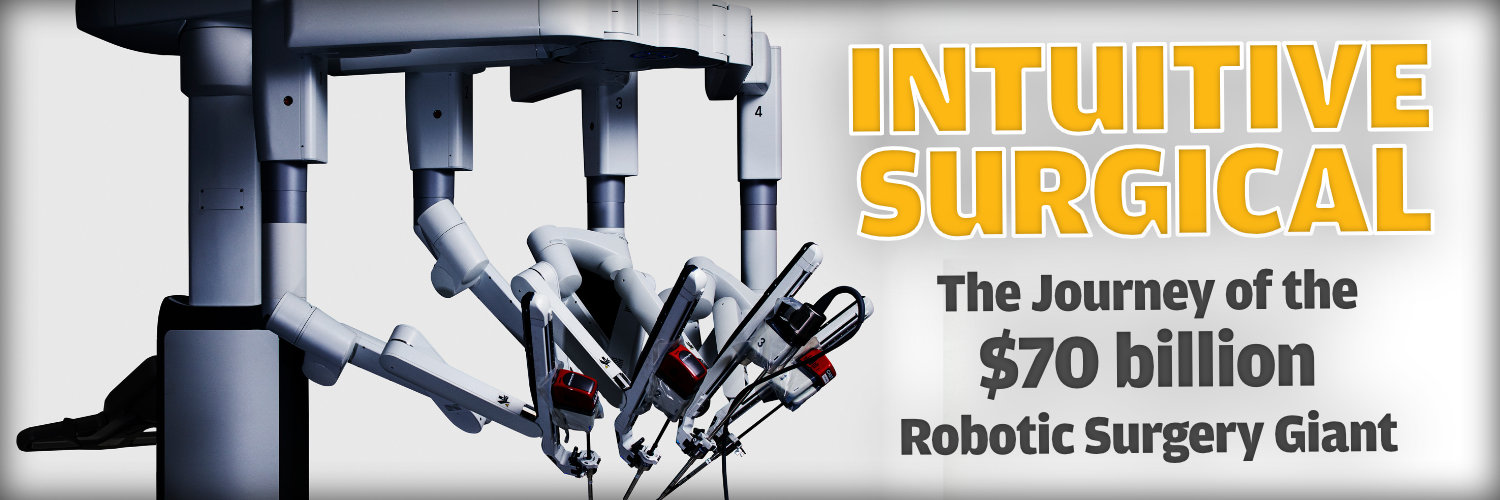
From Mistake to Marketing Masterpiece
There has been much discussion on how Coca-Cola became so dominant. Could it be that it was all from a mistake?
In Part 1 of this series, I wrote about why investors should pay close attention to microcaps that choose to get smaller via dispositions. In Part 2, I described a Case Study of Broadway & Seymour’s sale of their money-losing customer relationship management software business. This uncovered the profitable

In Part 1 of this series, I wrote about why investors should pay close attention to microcaps that choose to get smaller via dispositions. In Part 2, I described a Case Study of Broadway & Seymour’s sale of their money-losing customer relationship management software business. This uncovered the profitable and rapidly growing Elite subsidiary at a price barely above cash on hand. It appeared in this situation that hedge funds encouraged the CRM sale and later forced the sale of the Elite business as well. Investors buying shares even months after the disposition was announced quadrupled their investment in a couple of years.
In this third segment and the next, we’ll look at a couple more disposition situations. The intent is to further illustrate how a disposition can uncover a perfectly nice growth stock at a very cheap price. The two examples will disavow any beliefs that shopping among the losers means buying low-quality companies with limited upside. To the contrary, one of the situations rose 8 times before retreating and currently is a 5-bagger and rising (Clearfield CLFD). The other has so far tripled revenue in two years while the stock price quadrupled and is currently running higher (Asure Software ASUR). We’ll discuss how tax net-operating loss carry forwards are frequently a factor in disposition situations including these two examples. We’ll explain how these NOL’s can both enhance the value of the remaining business while simultaneously depressing the stock price. Finally, we’ll describe how an investor can find disposition situations for those of you who want to actively look.
For this segment consider Nasdaq-listed APA Enterprises. In late 2006 they sold the patent on their gallium-nitride heterojunction field effect transistor technology. In mid 2007, they shut down the Optronics business unit that was trying to develop and commercialize the technology. The company founder and CEO, Anil Jain, left the company. The Optronics business unit had all the fancy high-tech optical communications stuff that had excited investors for years. Stock sales had financed the company with the most recent operating profit being reported 17 years prior in 1990. This was a long-time loser, and the stock price had dropped to around $1 in the Summer of 2007 when they announced the shut down. There were about 12 million shares outstanding for a market capitalization of about $12 million.
So what was left? In 2003 the company had acquired Americable which was renamed to APA Cable & Networks. This business provided custom optical cables and connectors. Cables & connectors? How boring compared to gallium-nitride heterojunction field effect transistors for optical communications. Even so, this was what remained and some time after the disposition the remaining company was renamed Clearfield and the ticker changed to CLFD where it trades today.
The historical financial data for Clearfield (including the Optronics business unit) is shown immediately below. Fiscal year 2007 ended on June 30, 2007 so all of this data was available in August of 2007 when the stock traded well below $1 for a time.
The revenue is almost exclusively from the remaining cables and connectors business. The losses are almost exclusively from R&D expenses in the disposed Optronics segment. Now that’s some decent and consistent revenue growth and the stock price didn’t reflect it. At $1 a share the market cap of the nearly debt-free company was $12 million despite $18.6 million in revenue, break-even financials, and some cash on hand. Cheri Podzimek had been the President of Americable prior to the acquisition, continued to run it as APA Cable and Connectors, and became CEO of Clearfield following the Optronics shut down.
So this loser microcap with long-time unsuccessful management has now become a nicely growing business with a new CEO that has a track record of success. You’d think someone would notice. But they didn’t. I bought my shares in March of 2008, nine months after the disposition for the same $1 a share it traded at when the shut-down was announced. The Chairman of the Board, Ronald Roth, was buying shares too. He bought consistently for the whole 9 month period up to my purchase and then kept on buying. The new CEO also picked up some shares.
I’m sure it was difficult for Clearfield’s board of directors to dispose of a significant segment of their business. In this case, they had to shut down the Optronics segment that the current CEO and company founder had spent his life trying to make successful. The company had been reducing the Optronics R&D to minimize losses and could have just continued to do so. Somehow in 2007 they got up the gumption to shut it down entirely and let the company founder go. The market didn’t particularly like it. In August of 2007 the stock price dropped down in the $0.60 area for a $7 million market cap. The Chairman of the board, Ronald Roth, had already been buying but loaded up heavily at the depressed price. The new CEO had been buying too and added more during the August drop. The price recovered to the $1 area but Ronald Roth just kept adding shares. He hasn’t stopped buying to this day adding shares again this year along with some other insiders.
Insider buying is always a good sign. In a disposition, however, the whole company has been turned upside down. The historical financials don’t mean anything much anymore. The CEO is usually new and little is known about him (or her in this case). Clearfield didn’t have conference calls and still doesn’t to this day. Investors didn’t understand what this cables and connectors business was but it sure didn’t sound exciting. The people who do understand are the people who sit on the board of directors. They decided to dump the old business and rely on the remaining business. They know why they did it. Insider buying always matters. In the confusion of a disposition, it matters double!
In fact, I’m so enamored with confusing special situations that also have insider buying that I have a somewhat time consuming way to find them. I pull the daily insider buying list and quickly take a look at recent news on every microcap on the list that I’m not already familiar with. I use the three day old insider buying list available at insidercow.com for free. This is overwhelming the first few times you do it but then it gets easier. You already know what’s happening at about half the companies on the list because you’ve looked before. I’m typically left with six or seven stocks a day that I need to dig into a bit. It takes a half hour unless I find something interesting. I take a quick look at the headlines on Yahoo Finance and then go to the most recent quarterly earnings release. I do a quick read looking for terms like “earnings from continuing operations” or other terminology that indicates a recent sale. If there’s been some significant change recently the management comments usually reveal that, so they’re worth a quick read. When I screen the insider buying list, dispositions are only one of the things for which I’m looking. Looking for multiple types of special situations at once makes the process worth the time. If it’s just dispositions you want, I’ll discuss an easier way to find them that I also use in the next segment.
So why were the insiders willing to make the difficult decision to dump the Optronics business unit and then load up on shares themselves? Because what was left was pretty good. Cables and connectors doesn’t sound like an exciting business but what they were actually up to was developing their patented Clearview Cassette technology. This was a unique and lower cost method to connect fiber to the home (FTTH) in rural areas. Verizon is huge and they can provide their own cables and connectors to build out their FTTH networks in the big city. Rural areas, however, are a relatively small business served by regional telephone companies that have special needs. They need to be able to add units to their connector boxes as rural customers sign on. They can’t afford to install a complete box that will connect 50 homes like Verizon can in the big city. They need a cheap box to connect their first two customers and be able to add components to their box as their neighbors sign on. They also need connector boxes that are idiot proof. The guy connecting up homes in Wyoming may not get the training the Verizon guy in Chicago gets. This is a niche business that the big boys are too big to pursue and Clearfield is filling the niche. The business has a nice characteristic too. Once a telephone company chooses Clearfield’s solution, there’s revenue from the initial installation; but there’s revenue for years to come as the neighbors get connected too. In my opinion, this is a remarkably innovative company with a special leader at the top. They continue to develop and introduce new innovative products and take market share. I didn’t realize what a fine company this was when I bought it. I just thought it was cheap and had a nice record of growth. I thought it was a sure double and maybe a triple and that was about it. The lesson to learn is that when a board of directors is willing to make a difficult decision to dispose of a business and then go buy shares themselves you’re likely to get pleasant surprises.
Clearfield’s growth accelerated and in the most recent 12 months the company had $37 million in revenue. The company moved sourcing to China and benefitted from economies of scale so gross margins rose to a healthy 40%. This is evidence that Clearfield has differentiated products. There’s $11 million of cash that has built up on the balance sheet from retained earnings despite significant investment in new products. The company now is working to gain higher volume customers and distributors including overseas distributors for their clever products. The momentum crowd discovered the stock and got all excited because the company is a rural broadband stimulus play. They drove the stock to $8 last Summer prompting me to sell half. There’s a fiber shortage holding up projects recently knocking the stock back down. Ronald Roth and others were back in their buying recently and the stock has begun recovering to $5.25 as of this date. This was a growth stock at a deep value price; exactly why it’s worth your time to look at dispositions.
Academic research on dispositions reveals that most dispositions are preceded by a period of poor financial performance. After the disposition, the financial performance of the business generally improves. Of course, that is exactly what we’ve seen with Elite and Clearfield and will see with Asure Software in the next segment. There’s an important ramification of this characteristic. A wonderful new business can be uncovered by a disposition. The business is new like an IPO but there’s no investment bankers hyping it and lots of tax-loss sellers still dumping it. But there’s an important financial difference also. Dispositions typically have a history of losing money and therefore are sitting on significant tax net operating loss carry forwards (NOL’s). Clearfield had NOL’s totaling $34.6 million dollars expiring between 2008 and 2027. So Clearfield was like an IPO except that the emerging business didn’t have to pay corporate income tax for years to come. Don’t underestimate what an advantage this can be. The federal statutory corporate income tax rate is 35% and typically some state is in their grabbing several percent more. Not paying income tax can increase your earnings and cash flow by more than 60%! In the next segment we’ll discuss Asure Software that recently shut down their long-time money losing operations to uncover a nice software as a service company. Asure’s entire business plan is shaped to take advantage of their $100 million+ tax NOL’s.
===> Interact and learn with 250+ of the best microcap investors on the planet. [Join Us]
MicroCapClub is an exclusive forum for experienced microcap investors focused on microcap companies (sub $500m market cap) trading on United States, Canadian, European, and Australian markets. MicroCapClub was created to be a platform for experienced microcap investors to share and discuss stock ideas. Since 2011, our members have profiled 1000+ microcap companies. Investors can join our community by applying to become a member or subscribing to gain instant view only access. MicroCapClub’s mission is to foster the highest quality microcap investor Community, produce Educational content for investors, and promote better Leadership in the microcap arena. For more information, visit http://microcapclub.com and https://microcapclub.com/summit/
Get Alerted to our Next Educational Blog Post

There has been much discussion on how Coca-Cola became so dominant. Could it be that it was all from a mistake?

In 2000, Intuitive surgical raised $46 million in its IPO. In 2001, ISRG hit a low of $131 million market cap, and today is a $70 billion market cap. ISRG stock has risen 9,800% since its IPO.

An alternative lesson to draw from his study is that microcaps are fine but nanocaps are the ticket to wealth; you just have to be poor enough to buy them.